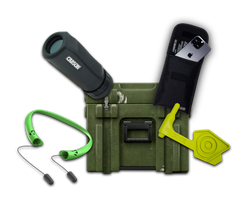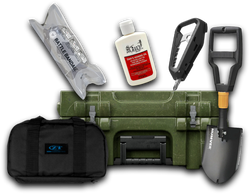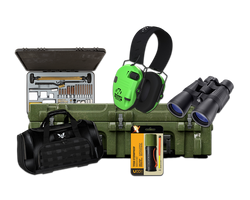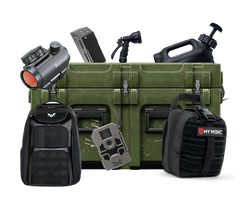如何用斧头生火:逐步指南
Table of Contents
- Introduction
- The Importance of Fire in Survival Situations
- Understanding the Hatchet
- Gathering Materials for Fire-Making
- Building Your Fire Structure
- Igniting the Fire
- Maintaining and Extinguishing the Fire
- Conclusion
- Frequently Asked Questions
Introduction
Imagine a cold evening in the wilderness, the crackling sound of a fire warming your surroundings, and the aroma of food cooking over the flames. Now, picture yourself sitting beside that fire, having successfully created it using just a hatchet. This scenario may seem distant to many, but with the right technique and preparation, it can become a reality.
Fire is not just a source of warmth and light; it is an essential survival tool that can elevate your outdoor experiences. Whether you are camping, hiking, or enduring an unexpected survival situation, knowing how to make a fire with a hatchet can be invaluable. In this post, we will explore the intricacies of using a hatchet for fire-making, covering the necessary tools, techniques, and tips to ensure your success.
By the end of this comprehensive guide, you will understand the significance of fire in survival situations, how to properly use a hatchet to gather materials for a fire, and the best practices for igniting that fire effectively. We will also incorporate references to Crate Club's tactical gear and subscription services, ensuring you have access to high-quality tools that can assist you in your fire-making endeavors.
The Importance of Fire in Survival Situations
Before delving into the specifics of fire-making with a hatchet, it is essential to understand why fire is a critical component of survival. Fire serves various purposes:
- Warmth: It keeps you warm in cold conditions, preventing hypothermia.
- Cooking: Fire allows you to cook food, making it safer to eat and more palatable.
- Signal for Help: A fire can serve as a signal for rescuers, especially in remote areas.
- Protection: Fire can deter wildlife and insects, providing a sense of security.
- Light: It illuminates dark areas, making it easier to navigate at night.
Given its many functions, fire is an indispensable element in any survival scenario.
Understanding the Hatchet
A hatchet is a versatile tool that can be utilized for various outdoor tasks, including fire-making. Its compact size, sharp blade, and ability to chop and split wood make it an ideal instrument for gathering firewood. Here are some key features of a hatchet that contribute to its effectiveness in this process:
- Sharp Blade: The cutting edge of a hatchet allows for precise chopping and slicing. This is crucial when preparing tinder and kindling.
- Compact Size: Unlike larger axes, a hatchet is lightweight and easy to carry, making it a practical choice for camping and hiking.
- Multi-functionality: A hatchet can be used for other tasks besides chopping wood, such as building shelters or preparing food, making it a valuable addition to your gear.
At Crate Club, we offer high-quality hatchets and survival tools that can enhance your outdoor experiences. Explore our subscription services to find the right gear for your next adventure: Crate Club Subscription Services.
Gathering Materials for Fire-Making
1. Identifying Suitable Wood
The first step in making a fire is to gather the right materials. There are three essential components for a successful fire: tinder, kindling, and fuel wood.
-
Tinder: This is the initial material that ignites and helps start the fire. Ideal tinder materials include dry leaves, grass, pine needles, or even cotton balls. You can also create your own tinder by using your hatchet to shave off thin strips of wood from a dry log.
-
Kindling: These are small sticks or branches that catch fire more easily than larger logs. Look for dry twigs or small branches about the thickness of a pencil. Using your hatchet, you can split larger branches into smaller pieces, facilitating the ignition process.
-
Fuel Wood: This is the larger wood that will keep your fire burning once it is established. Gather logs that are dry and free from moisture. Your hatchet can help you chop these logs into manageable sizes.
2. Preparing the Materials
Once you have gathered your materials, it is time to prepare them for the fire:
-
Creating Tinder: Use your hatchet to shave off fine wood shavings or create small bundles of dried plant material. Ensure that your tinder is as dry as possible since moisture will hinder ignition.
-
Cutting Kindling: With your hatchet, chop the gathered small sticks into varying sizes, ideally ranging from pencil thickness to larger branches. This variety will help create a more robust fire structure.
-
Sizing Fuel Wood: Your hatchet can be employed to chop larger logs into smaller, manageable pieces, ensuring that they will ignite efficiently when placed on the fire.
Building Your Fire Structure
Once your materials are prepared, the next step is to construct a fire structure. This will facilitate airflow and help the fire catch and grow. Here are a few popular methods to build your fire:
1. Teepee Structure
To create a teepee structure:
- Place your tinder bundle at the center of your fire area.
- Arrange kindling sticks around the tinder in a teepee formation, leaving gaps for airflow.
- Gradually add larger pieces of fuel wood around the kindling, maintaining the teepee shape.
2. Log Cabin Structure
For a log cabin structure:
- Begin with a small pile of tinder.
- Place two pieces of fuel wood parallel to each other, leaving space for the tinder in between.
- Stack additional logs on top in a crisscross pattern, creating a cabin-like structure.
3. Lean-To Structure
To build a lean-to structure:
- Securely place a larger log or branch horizontally on the ground.
- Position your tinder bundle under this log.
- Lean smaller sticks against the log, ensuring they are angled toward the tinder. This will allow the flames to reach the kindling and ignite it.
Regardless of the structure you choose, ensure that there is adequate airflow to support combustion.
Igniting the Fire
Now that your tinder, kindling, and fuel wood are prepared and structured, it’s time to ignite the fire. Here are a few methods to consider:
1. Using Matches or a Lighter
The simplest way to start a fire is with matches or a lighter. Light the tinder directly and gently blow on it to encourage the flames.
2. Using a Flint and Steel
If you prefer a more traditional approach, a flint and steel can be employed to create sparks:
- Strike the flint against a steel surface to produce sparks.
- Direct the sparks onto your prepared tinder.
- Once the tinder ignites, gently blow on it to help the flames grow.
3. Using the Hatchet for Sparks
If you have a hard, high-carbon steel hatchet, you can create sparks by striking it against a piece of flint or quartz. Here’s how:
- Hold your hatchet firmly and strike it against the flint at an angle.
- Aim to create small metal shavings that can ignite.
- Direct the sparks onto the tinder and blow gently to encourage ignition.
Maintaining and Extinguishing the Fire
Once your fire is established, you may need to add more fuel wood to keep it burning. Always maintain a safe distance from the flames and be cautious about what materials you add.
When you are ready to extinguish the fire, do so responsibly. Here’s how:
- Allow the fire to burn down as much as possible.
- Gradually pour water over the fire or use dirt to smother it.
- Stir the ashes to ensure all embers are cooled and extinguished.
Conclusion
Making a fire with a hatchet is not just a survival skill; it is an essential component of enjoying the great outdoors. Through this guide, you have learned about the significance of fire, how to gather the necessary materials, the various structures for building a fire, and the methods for igniting it. With the right tools and techniques, you can confidently create a fire that will enhance your outdoor experience.
If you are looking for high-quality gear to assist you in your fire-making endeavors, consider exploring Crate Club's curated selection of tactical tools and survival kits. Our subscription services deliver premium gear directly to your doorstep, ensuring you are always prepared for your next adventure. Discover more about our offerings at Crate Club Shop and embark on your journey toward preparedness.
Frequently Asked Questions
Can I use a hatchet to start a fire directly?
While a hatchet can assist you in preparing materials for a fire, it is not typically used to start a fire directly. Instead, it is effective in gathering and processing wood for tinder and kindling.
What materials are best for tinder?
Ideal tinder materials include dry leaves, pine needles, dry grass, and shredded bark. The key is ensuring that they are dry and fibrous, allowing them to ignite easily.
How do I maintain a fire once it is lit?
To maintain a fire, add larger pieces of wood as needed, ensuring that airflow is not obstructed. Regularly check the fire and adjust the structure if necessary.
Is it safe to use a hatchet in wet conditions?
Using a hatchet in wet conditions is safe as long as you are cautious. You may need to split wood to access dry material inside.
Where can I find quality hatchets and survival gear?
You can find high-quality hatchets and other tactical gear through Crate Club. Explore our offerings and subscription services for the best equipment to support your outdoor adventures.
分享这篇文章



